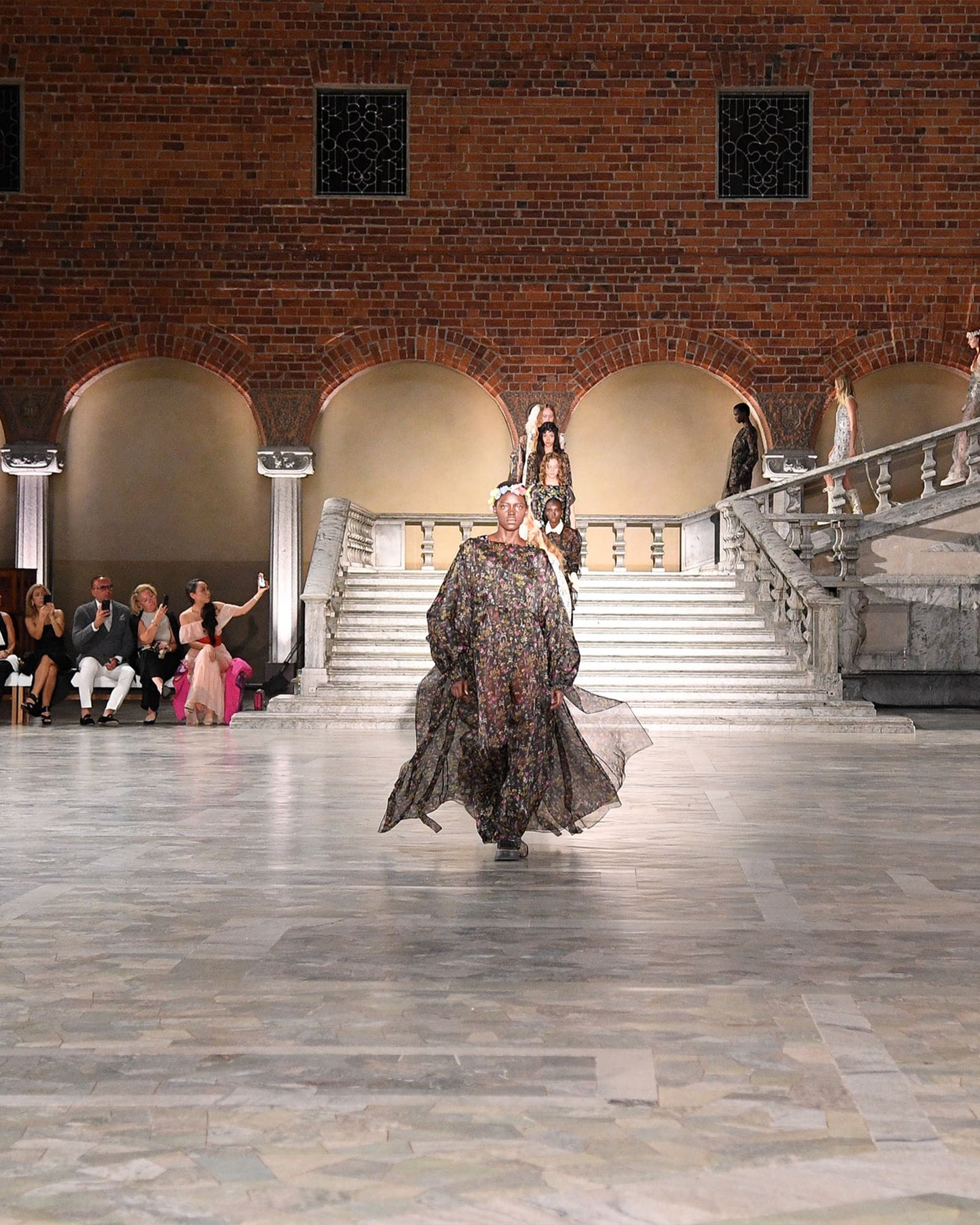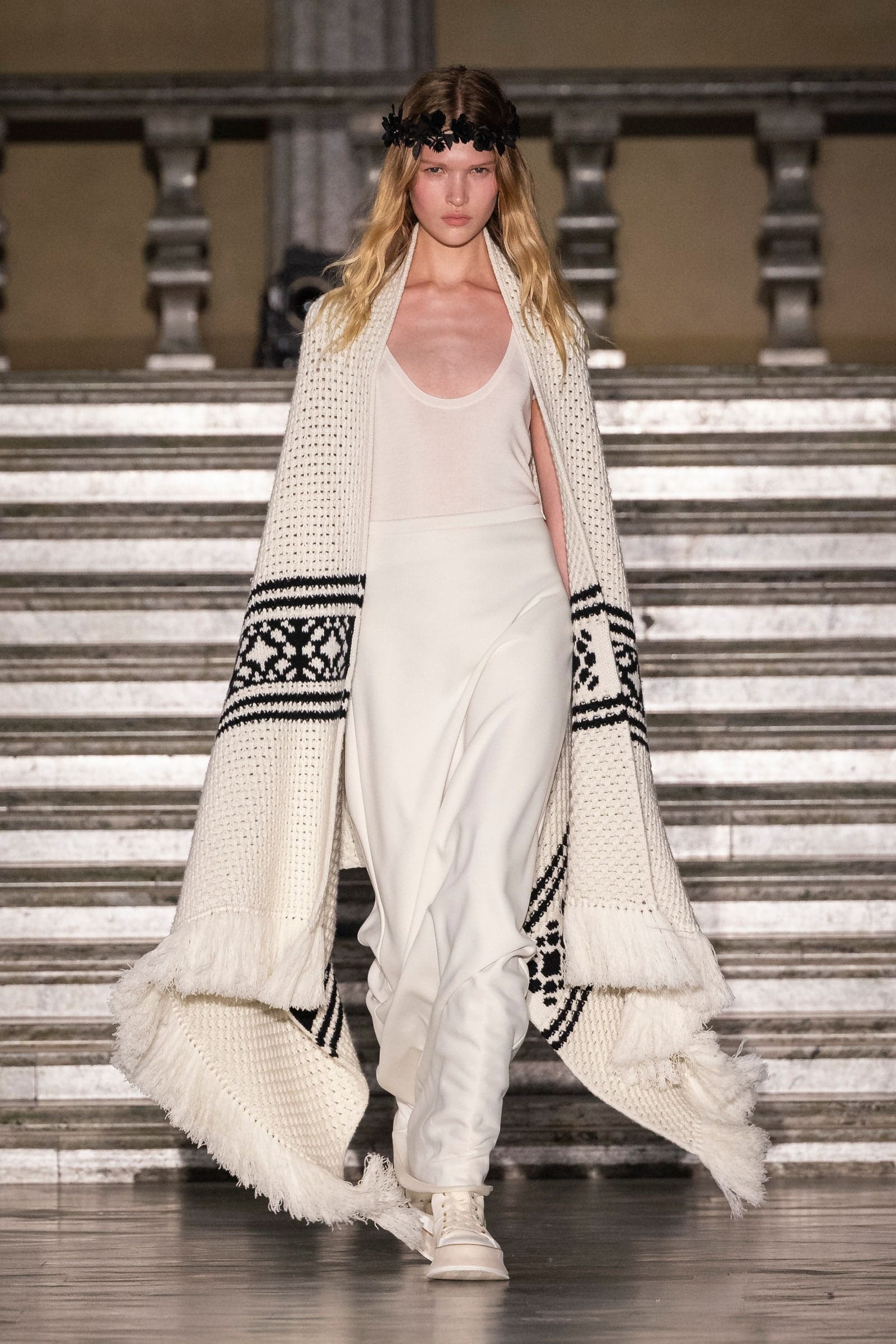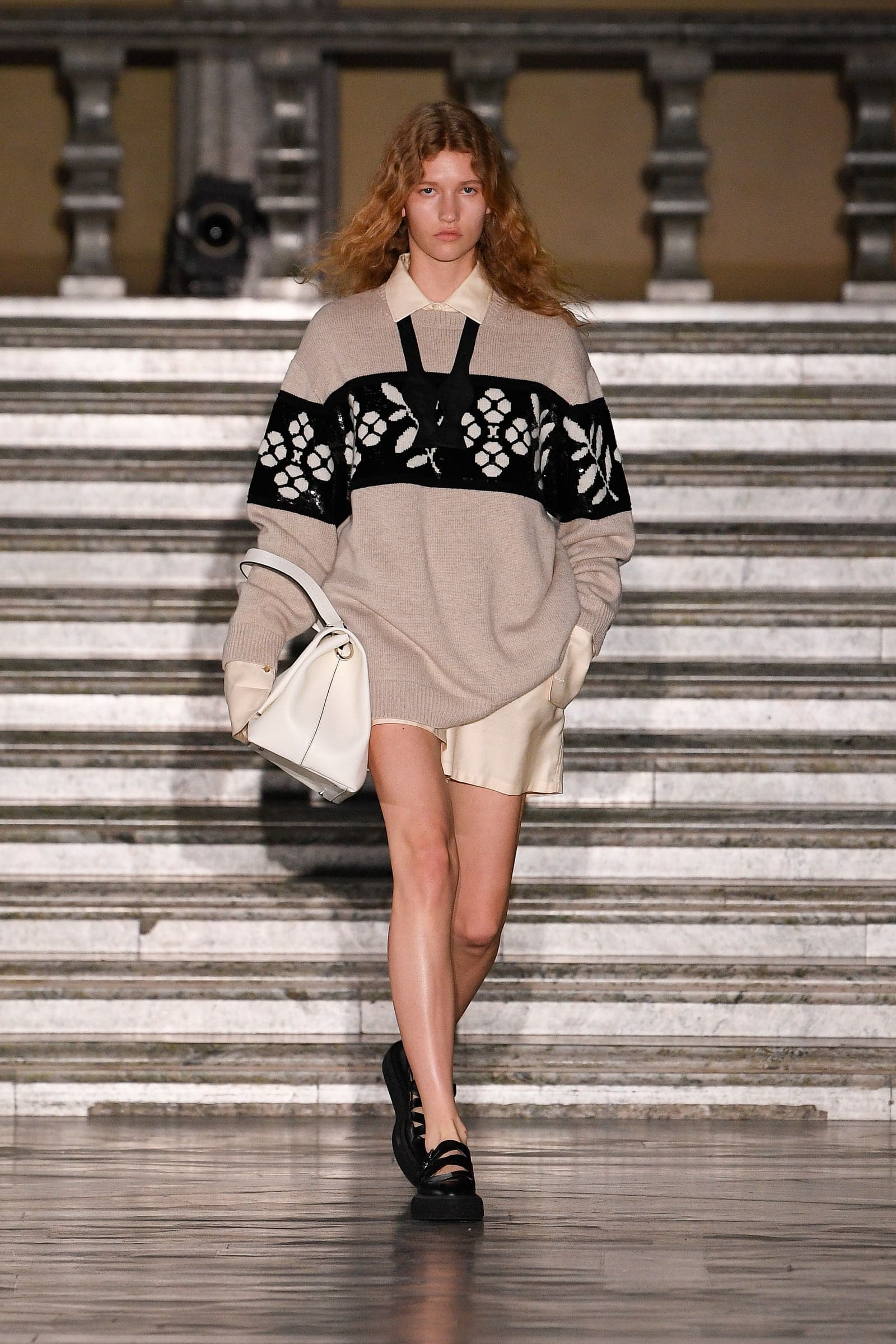Ian Griffiths’s Resort 2024 Max Mara collection nods to the magic and mystery of Swedish folklore—and the powerful legacy of its feminist icons.
As Sweden prepares to celebrate Midsommardagen, Max Mara creative director Ian Griffiths took over Stockholm City Hall to unveil a Resort 2024 collection that nodded to the mystery and magic of the country’s folklore—and the powerful legacy of its feminist icons.
-
Getty Images
Max Mara’s muse of the moment is a Swedish author and academic
Selma Lagerlöf was the first woman to be awarded the Nobel Prize for literature in 1909, and more than a century later was bang in the centre of Max Mara creative director Ian Griffiths’s Resort 2024 moodboard. “She is a national hero in Sweden,” said Griffiths, who confessed he had never heard of Lagerlöf before setting his heart on staging a Max Mara resort show in Stockholm. “Having identified a location you have to find a story, and Selma Lagerlöf fulfilled every requirement. She was a lesbian, a social activist and a feminist, and as a writer she fought against realism in Swedish literature – she wove this fairytale narrative into her work. She was radical and she challenged the status quo,” Griffiths said ahead of the show, explaining that he drew less on Lagerlöf’s own wardrobe than what she represented. “She was born into an upper middle class family and she rebelled, just like a character in an Ibsen play. She’s on my moodboard forever now.”
-
Getty Images
Think Midsommar, but moody
The collection’s floral elements – a meadow’s worth of wildflowers flutter across billowing dresses and capes – are an ode to the Swedish folk festival that celebrates the gift of the summer. And yes, Griffiths has seen the Florence Pugh film. “I put aside all the sinister, gory bits, but I loved the flowers,” he said. “[That said], there is something a little bit gothic about the collection,” the designer noted, pointing to the inherent darkness of Scandinavian folk tales in which children “get baked in pies, or have their feet cut off, or are shrunk down to the size of a thumb”. The models’ floral coronets – made from paper rather than real foliage (“I think something that goes on the runway has to be a made object”) – were ivory and black, in contrast to Midsommar’s traditional explosion of colour. “They instantly become much more powerful, and less pretty,” Griffiths said. “There is something just a bit moody about the collection, and a tiny allusion to punk, which I think is always a good thing.”
-
Getty Images
It’s Griffiths’s ode to Scandi cool
In Griffiths’s mind, Scandi style is defined by “that cool, detached aesthetic”. “It’s Ingrid Bergman,” said the designer, who feels there have always been parallels between Max Mara design and Swedish design. “Apparently one of Bergman’s favourite wardrobe pieces was a Max Mara coat – she gave one to [her daughter] Isabella Rossellini.” Though Sweden was the starting point, the Resort 2024 collection draws on Scandinavia as a whole, with gigot sleeves and bow ties inspired by the gallerist Signe Thiel joining pom poms and tassels that nod to the vast world of Nordic folk culture on the runway. Those elegant, elbow-length capes, meanwhile, would doubtless have appealed to original Scandi cool girl, Ms Bergman.
-
Getty Images
Ian Griffiths was also inspired by another “troublesome lesbian”
Queen Christina ruled the Swedish Empire for more than 20 years in the 17th century and is regarded as one of the most learned women of her time – a feminist icon before the term existed. “There is a huge tradition of parity to the sexes here in Scandinavia,” said Griffiths, who noted that female vikings “did their fair share of pillaging as well”. Like Lagerlöf, Queen Christina reflects the progressive nature of Scandinavia the designer hoped to capture with his Resort collection. “I also loved that Wikipedia describes Christina as a ‘troublesome lesbian’,” Griffiths said, before adding with a laugh: “I’m completely trashing my erudite reputation here by revealing my internet sources…”
-
Getty Images
The runway was in one of Stockholm’s most iconic buildings
Griffiths brought the fashion set to Kungsholmen Island, home to Stockholm City Hall, which had its official opening on Midsummer Eve, 1923. Its Blue Hall has been the setting for the Nobel banquet – held annually after the Nobel Prize ceremony – every year since 1930. The designer had immersed himself in museums, galleries, restaurants and shops in Stockholm and beyond while creating his Scandinavian-themed collection. “The folk museum in Oslo [Norsk Folkemuseum] is amazing – I spent ages there, and I spent a lot of time at [beloved Swedish interiors destination] Svenskt Tenn. It’s one of the perks of my job,” Griffiths said. “I can wake up one morning and think, we should do a show in Scandinavia. And then a year later here we all are in Scandinavia – including Demi Moore and her Chihuahua!”
This article was originally published on Vogue Australia.





